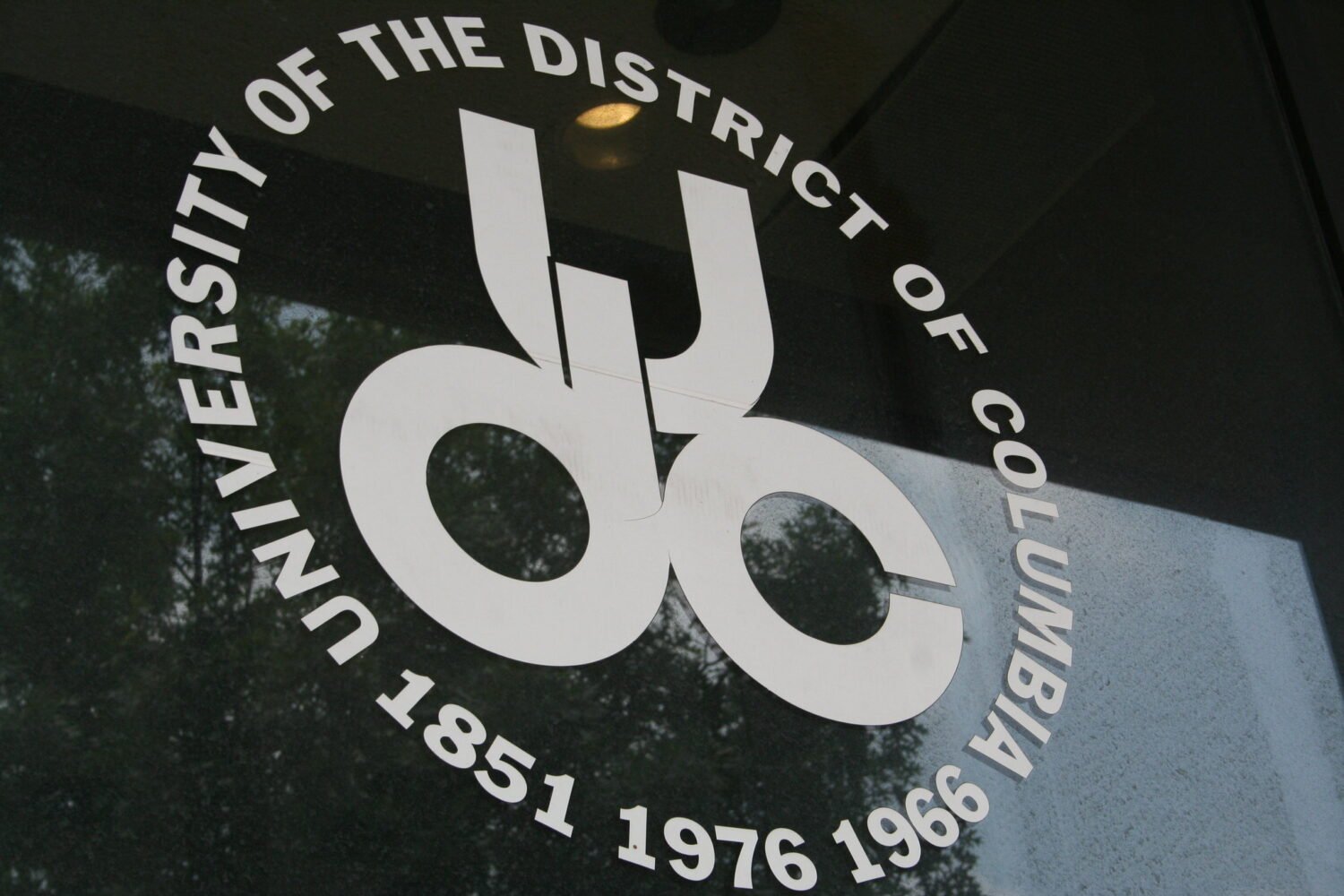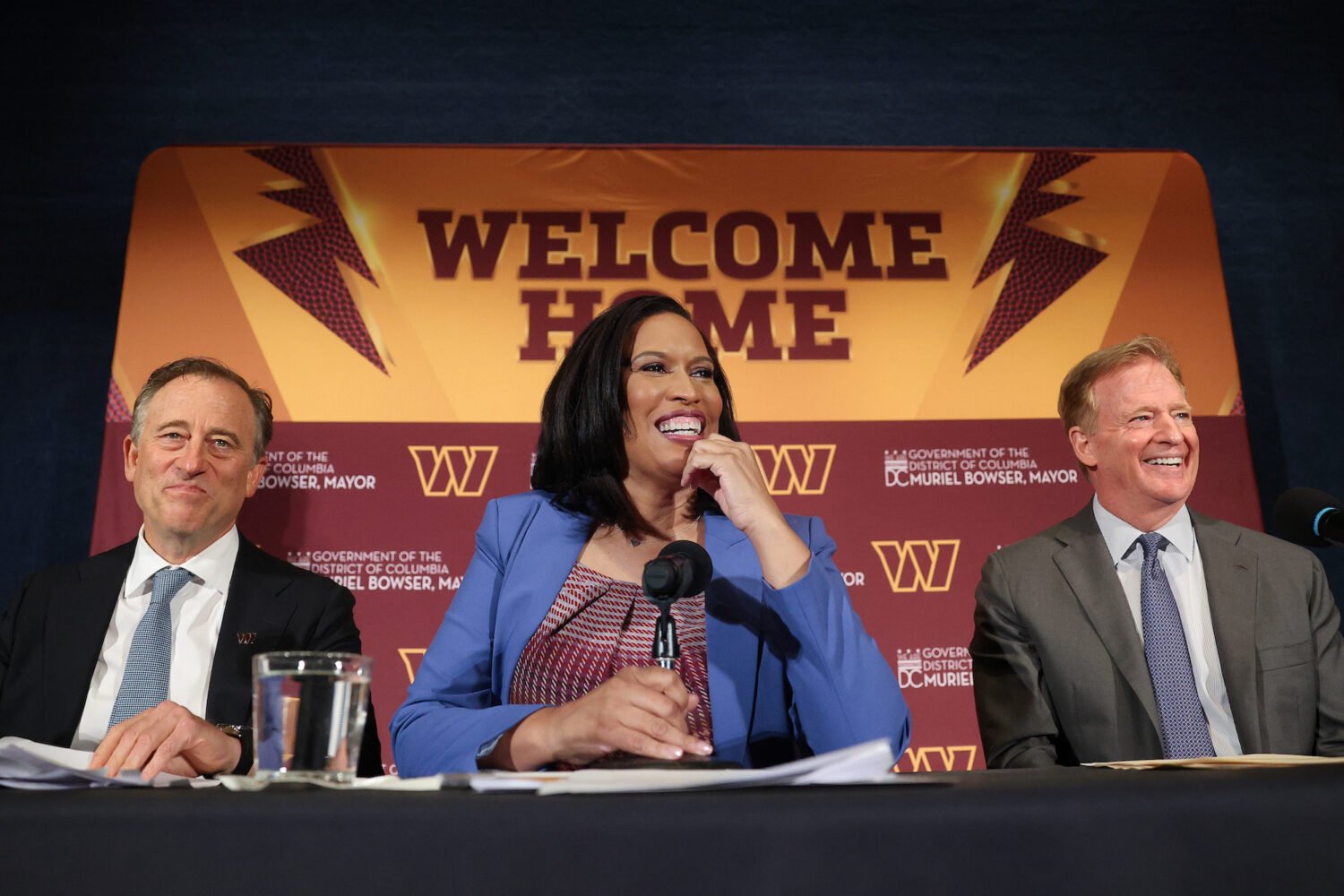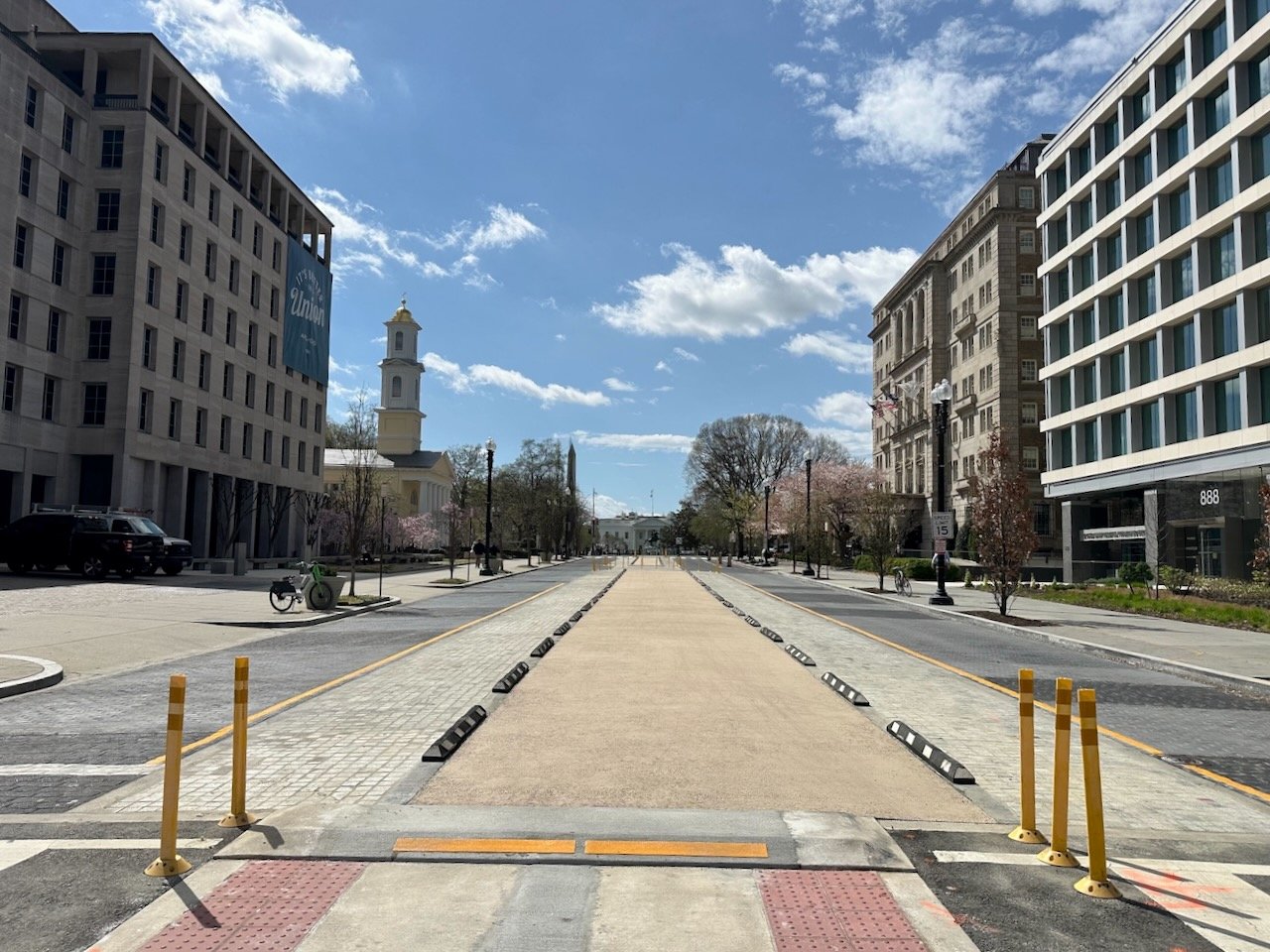The construction process on DC United’s new stadium finally got underway Monday as players, team executives, and DC government officials knocked down an old storage structure on the site of the future soccer venue.
Mayor Muriel Bowser was greeted to the podium by Ward 6 resident Willie Graves, who is also the assistant project manager for the demolition phase of the build. Graves started working in construction as a laborer; today, he thanked the Local 11 for helping him rise up the ranks, receiving a big cheer from his colleagues on the job. He also ushered in a theme common to the morning’s speeches: the benefits the stadium will afford Ward 6.
“Welcome to the future home of DC United!” Bowser said in front of an audience of season-ticket holders, reporters and Talon, the team’s anthropomorphized eagle mascot. “We found a great spot here.”
Bowser emphasized the job creation DC United and its stadium will bring to Buzzard Point, including 1,000 construction and permanent jobs. She announced the eventual hiring of a Workforce Liaison to ensure Ward 6 residents get “priority” access to training and apprenticeship programs as they arrive.
Brian Kenner, the deputy mayor for planning and economic development, said the Buzzard Point stadium will bring 1 million people to Southwest Waterfront each year, and $1 billion in tax revenue. This is why “we do these projects,” Kenner insisted.
Bowser and others, wearing silver hard hats, took turns manning the destructor-excavator. Among the supporters that gathered to celebrate the bulldozing at Second and S streets, Southwest, was Bertha Hall and her gang of “96ers,” a group of fans who have been season ticket holders since United’s first season 20 years ago. Though she declined to share her age, Hall did note that she recently retired from the Department of Health and Human Services. She estimates she’s missed fewer than six home games since the 1996 opener at Robert F. Kennedy Stadium, where she worked as a volunteer shepherding VIPs.
While DC Council Chairman Phil Mendelson lamented the length of these groundbreaking ceremonies, he still took a few seconds for a victory lap. “There were a lot of folks that said the council would never approve this,” he reminded the crowd. For her part, Bowser referenced her decision to uncouple the sale of the Reeves Center at 14th and U from the stadium project in an effort to expedite the construction.
Not everyone, it turns out, is pleased by the timeline, which would see the Black and Red taking their new pitch in 2018. About a dozen protestors, mostly Ward 6 residents, gathered at a side gate to picket the demolition and construction project. One protestor, a Ward 6 resident who gave his name only as Malcolm, carried his two-year old son as well as a sign reading “Warning Standing On Contamination.” Both he and his son, who Malcolm says suffers from asthma, were wearing dust masks for fear the construction would release materials that might aggravate his son’s symptoms.

 Rhonda Hamilton, who has lived blocks away from the building site for 30 years, is a member of the area’s advisory neighborhood commission and she echoed her neighbors’ concerns. She said there hasn’t been sufficient investigation into the site to know if a broad demolition could be dangerous to those who live nearby, like Brenda Hamilton, who has resided in Ward 6 for the last decade. Brenda believes that the slate of “revitalization” projects over the past few years contributed to her husband’s illness.
Rhonda Hamilton, who has lived blocks away from the building site for 30 years, is a member of the area’s advisory neighborhood commission and she echoed her neighbors’ concerns. She said there hasn’t been sufficient investigation into the site to know if a broad demolition could be dangerous to those who live nearby, like Brenda Hamilton, who has resided in Ward 6 for the last decade. Brenda believes that the slate of “revitalization” projects over the past few years contributed to her husband’s illness.
DC United Stadium—as it will be called until the team sells naming rights—is being designed by the architecture firm Populous, which has built several other MLS facilities, including venues in Houston, Kansas City, and Orlando, Florida. When complete, the 20,000-seat stadium will leave the decrepit, 55-year-old RFK Stadium without a full-time tenant.
The stadium is being built on a nine-acre plot the District government acquired in a series of sometimes contentious transactions with Pepco, the development firm Akridge, the investor Mark Ein, and the SuperSalvage scrap yard. The city will spend up to $150 million on improving the land and surrounding infrastructure, while United will pay for the structure itself. When completed, DC United Stadium could be the most expensive in MLS history, according to a 2014 report commissioned by city officials.


















